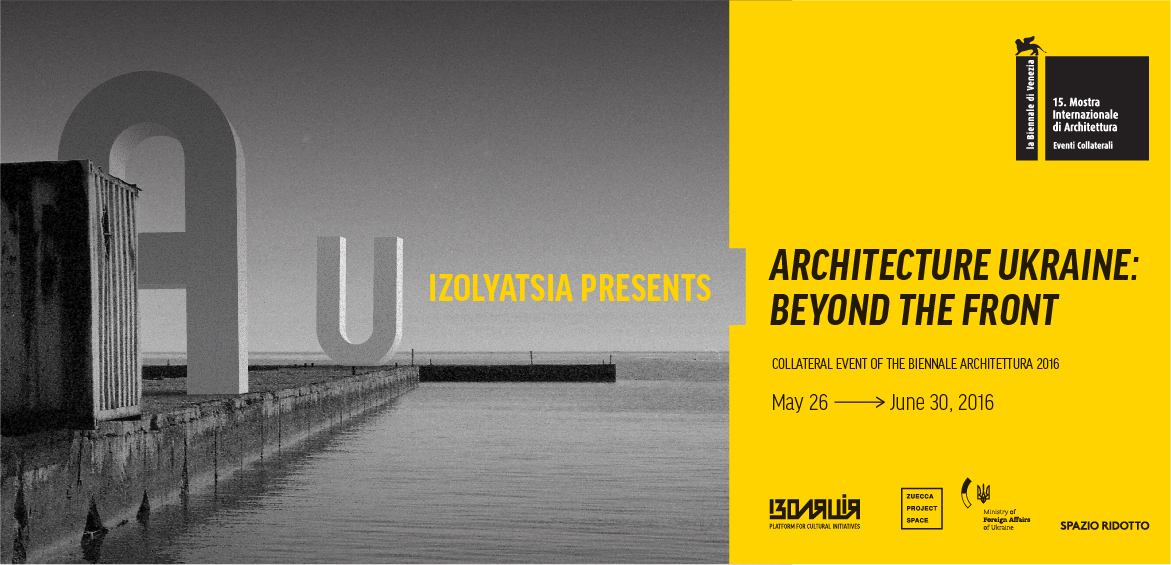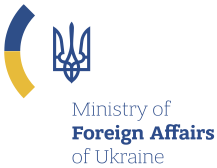IZOLYATSIA presents collateral event of the Biennale Architettura 2016

On May 26 through June 30, 2016, IZOLYATSIA presents the project Architecture Ukraine – Beyond the Front in Venice, as a collateral event of the 15th International Architecture Exhibition of La Biennale di Venezia.
Architecture Ukraine (AU) – Beyond the Front begins a dialogue on a crucial issue of our time: envisioning the future of cities in places of ongoing conflict. Do architecture and design play a role in the existing state of affairs? Can we make fundamental changes to the presuppositions that determine the way we live and thrive in the urban environments of our regional conflicts? IZOLYATSIA. Platform for Cultural Initiatives proposes to bring greater visibility to the complexities of these embattled contexts. Will the conflict in Ukraine serve as a catalyst to further a much needed and deeper consideration of the contemporary built environment within the Rust Belt of the Donbas Region?
In Ukraine, these aspirations face mounting obstacles. With the advent of the recent and enduring war, the nation’s landscape is changing. Even regions untouched by the simmering conflagrations in the east have not escaped the shadow of violence and instability. Architecture Ukraine – Beyond the Front uses IZOLYATSIA’s position as a beacon of contemporary art and culture from the now separatist-held city of Donetsk to examine the challenges marking this war-torn region. In the summer of 2015, IZOLYATSIA’s Architecture Ukraine residency programme explored the Ukrainian-held conurbation of Mariupol, supporting some research-based projects by international artists, architects, and designers. The exhibition features works by participants Romea Muryn, Francisco Lobo, Fulco Treffers, Danielle Rosales and Robin Coenen, and more.
Architecture Ukraine – Beyond the Front expands on this material by applying investigations developed during the residency to IZOLYATSIA’s home city, Donetsk. The exhibition seeks to hold up a mirror from ‘beyond the front,' juxtaposing the twin stories of Mariupol and Donetsk as they diverge from sister cities of Donbas to outposts on either side of a volatile de facto border. New methods of understanding and describing cities promote and inform radical approaches to re-envisaging our built environments. The exhibition hopes to confront anthropological, economical, social and cultural history while analysing social and geographical boundaries that limit or expand the cities’ dynamics.
The exhibition will consist of data visualisations, interviews, models, film and printed material to engage the visitors with the diversity, history and culture of the Donbas region of Ukraine. The main focus of the exhibition will be the video material (documentary film and interviews) created by Architecture Ukraine 2015 residents Romea Muryn and Francisco Lobo juxtaposed with interviews from Donetsk. This material explores the built environment and the daily life of these cities through the eyes of architects, artists, social workers and CEO's of large enterprises. Data visualisations will serve as the hard facts on a timeline of the current conflict displaying information ranging from occupation, death rates, gender and nationality to industrial export, oligarchy and power. A physical and metaphorical boundary will seamlessly engage the visitors to shift and displace it.
The documentary Centrallurgy, created by Romea Muryn (architect, Poland) and Francisco Lobo (filmmaker, Portugal) provides a creative and engaging overview of what defines Mariupol, drawing their research on anthropology, economy, social and cultural history, literature and philosophy to reach an understanding of what makes Mariupol. What will the future bring to this heavily industrialised coastal city of regional significance?
Danielle Rosales and Robin Coenen (Germany), representatives of the Civic City Network, an independent association and evolving network of designers, architects, sociologists, political scientists, geographers, and urban planners, will present their findings of the visual identity of Mariupol. Through a series of social interventions they have engaged local communities into a dialogue about topics of expectation, change, looks of a city, migration, Europe and others. To be presented through graphics and printed materials.
Fulco Treffers, architect and urban researcher from the Netherlands and founder of 12N studio of urban design, utilised the format of a magazine (Mariupol!) to present his research of exploring the city through social engagement with the local community. By meeting and talking to people, a whole new city emerges that is usually hidden by buildings and infrastructure. Fulco presents a series of acupuncture interventions within the urban context of Mariupol to revitalise the social fabric and its relationship to the city.
Participant exhibitors: Romea Muryn, Francisco Lobo, Fulco Treffers, Danielle Rosales and Robin Coenen.
Curators of Architecture Ukraine (Kyiv/Mariupol): Rick Rowbotham (UK) Architect, Urbanist and Masterplanner and Krists Ernstsons (Latvia) Architect, with the collaboration of Clemens Poole (NY) Artist.
Producers:
Maureen Sullivan, RedArtProjects (NY)
Mykhailo Glubokyi, IZOLYATSIA exhibitions manager (Kyiv)
Dmytro Sergieiev, IZOLYATSIA Graphic designer (Kyiv)
Project made possible with the support from
IZOLYATSIA & Zuecca Project Space: Alessandro Possati, Director
Opening period: May 26 – June 30, 2016
Venue: Spazio Ridotto, 1388 Calle del Ridotto, San Marco, Venice
Supported by the Ministry of Foreign Affairs of Ukraine


Media partners
